Pleurotus spp.
Scientific names: Pleurotus ostreatus (Jacq.) P. Kumm.;
Pleurotus pulmonarius (Fr.) Quel.; Pleurotus populinus
O. Hilber & O.K. Miller
Derivation of name: Pleur- means "side" and otus means
"ear" referring to the off-center stalk or laterally
attached
stipe of some species in the genus. For Pleurotus
ostreatus: Ostre- means "oyster" and atus means
"resembling."
Synonyms: For Pleurotus ostreatus: Agaricus
ostreatus Jacq.
Common name(s): Oyster mushroom.
Phylum: Basidiomycota
Order: Agaricales
Family: Pleurotaceae
Occurrence on wood substrate: Saprobic or parasitic;
solitary to more typically in overlapping clusters on living or
dead deciduous trees, decaying logs, and stumps.
Pleurotus ostreatus sometimes occurs on conifers; April
through November, year-round during mild periods.
Dimensions: Caps 5-20 or more cm wide; stipes 0.5-4 cm
long and 0.5- 3.5 cm thick. Stipes may be absent.
Cap: Moist or dry; smooth; variable in color: whitish to
cream, grayish to brown, some with lilac tones; convex
to flat to fan-shaped or semicircular; flesh is typically
thick (> 1 cm) at least above the point where the gills
come together.
Gills: Decurrent or radiating from point of attachment;
broad;
whitish, yellowish in age.
Spore print: White to pale lilac-gray.
Stipe: Sometimes absent or rudimentary. If present, lateral
to eccentric or even central if fruitbodies are on top of a log
or stump; whitish; hairy at base.
Veil: Absent.
Edibility: Edible, rated as choice.
Comments: The variable forms of the oyster mushroom are
now
accounted for by recognizing a
species
complex
consisting of Pleurotus ostreatus, Pleurotus pulmonarius,
and
Pleurotus populinus. Unlike the first two species,
P. populinus appears to be restricted to trees in the genus
Populus (poplars, aspens and cottonwoods).
The three
species exhibit
differences
in morphology, color, host/
substrate, and fruiting season.
The web sites below
contain additional information
about
this complex of
three
closely related species which
have all at one time
or another
been called Pleurotus
ostreatus.
More information at MushroomExpert.com:
More information at TomVolkFungi.net:
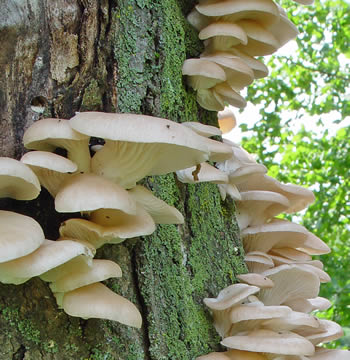
Figure 1. Oyster mushrooms typically grow in
overlapping clusters. Photo © David Work.
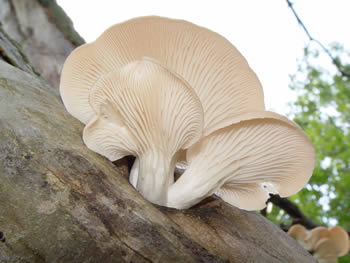
Figure 2. If a stipe is present, the gills will be decurrent.
Photo © David Work.
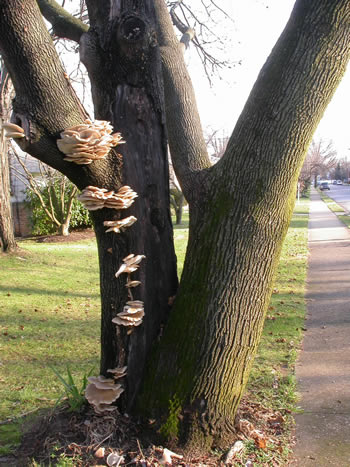
Figure 3. Oyster mushroom parasitizing a Norway
maple (Acer platanoides) street tree.
Photo © Gary Emberger.
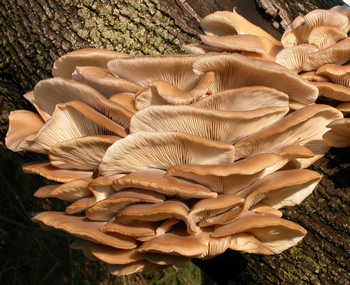
Figure 4. Close-up of a cluster
of oyster mushroom caps
fruiting on the tree in Figure 3. Given the distinct
brownish color and late season growth (December),
this species is most likely Pleurotus ostreatus.
Photo © Gary Emberger.
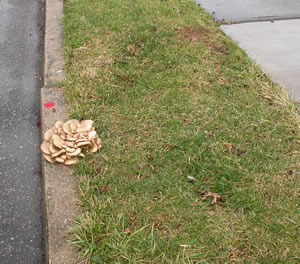
Figure 5. Although these oysters appear to be growing
in grass, they are actually growing on buried wood. A
large pin oak tree (Quercus palustris) was removed
from this site just a few years
before the picture was
taken. Photo © Gary Emberger.
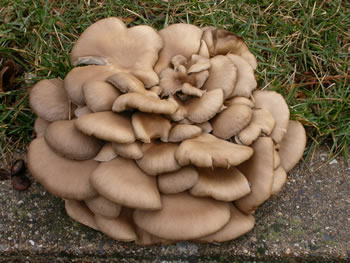
Figure 6. The oysters of Figure 5 were growing in PA in
January during a period of exceptionally mild weather.
Late season oysters often are tan or gray in color. In
addition, these caps produced a distinctly gray-lilac
spore print that is charactristic of Pleurotus ostreatus.
Photo © Gary Emberger.
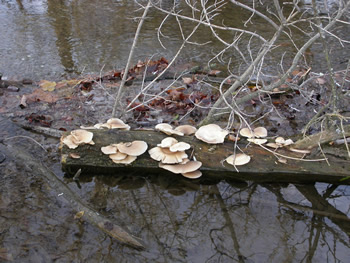
Figure 7.
November fruiting of Pleurotus ostreatus
on a log in a stream. Photo © Gary Emberger.
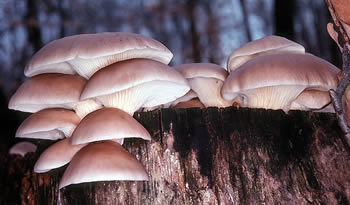
Figure 8. Pleurotus ostreatus.
Photo © Pam Kaminski.
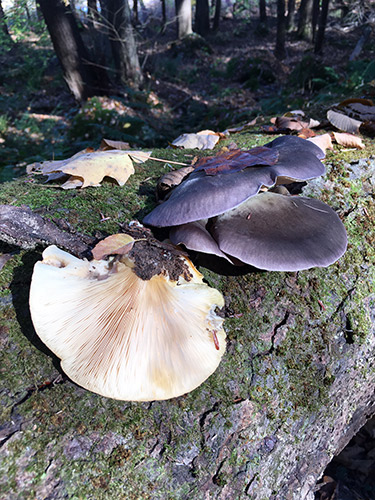
Figure 9.
Note the lilac color tones of this specimen from
New Hampshire observed in late October.
Photo © Gary Emberger.
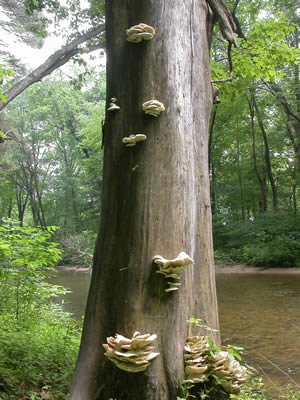
Figure 10. In contrast to the mushrooms in Figures
3-9, these oysters were fruiting in June. Summer
fruiting and a lighter cap color are typical of
Pleurotus pulmonarius.
Photo © Gary Emberger.
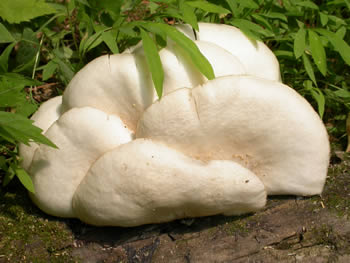
Figure 11. A cluster of Pleurotus pulmonarius caps
growing on a log near the tree in Figure 10.
Photo © Gary
Emberger.
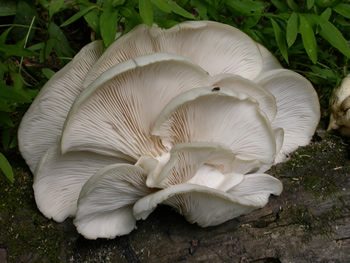
Figure 12. Underside
of the caps in Figure 11.
Photo © Gary Emberger.
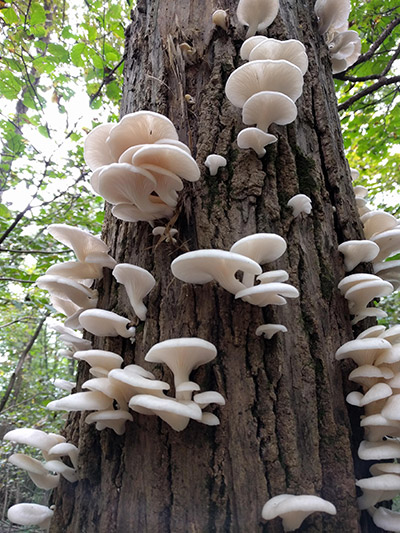
Figure 13. A beautiful fruiting of
Pleurotus pulmonarius in
early September. The picture was taken along the Appalachian
Trail in Pennsylvania. Photo © Amber Wingert.
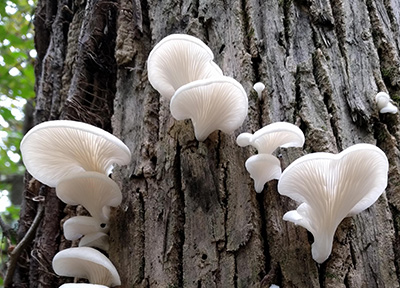
Figure 14. Caps, gills, and stipes of additional specimens
growing on the tree in Figure 13.
Photo © Amber Wingert.